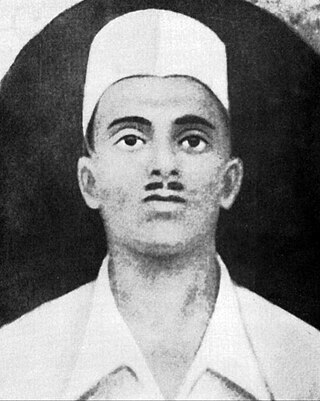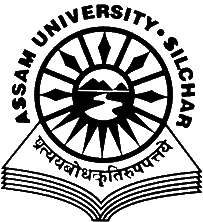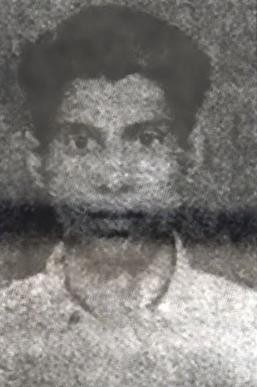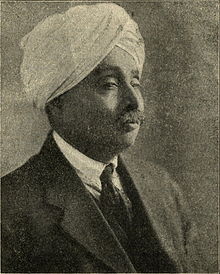
Guru Tegh Bahadur was the ninth of ten gurus who founded the Sikh religion and was the leader of Sikhs from 1665 until his beheading in 1675. He was born in Amritsar, Punjab, India in 1621 and was the youngest son of Guru Hargobind, the sixth Sikh guru. Considered a principled and fearless warrior, he was a learned spiritual scholar and a poet whose 115 hymns are included in the Guru Granth Sahib, which is the main text of Sikhism.

Silchar is a city and the headquarters of the Cachar district of the state of Assam, India. It is second largest city of Assam after Guwahati in terms of area, population and GDP. It is also administrative capital of Barak Valley division. It is located 343 kilometres south east of Guwahati. It was founded by Captain Thomas Fisher in 1832 when he shifted the headquarters of Cachar to Janiganj in Silchar. It earned the moniker "Island of Peace" from Indira Gandhi, the then Prime Minister of India. Silchar is the site of the world's first polo club and the first competitive polo match. In 1985, an Air India flight from Kolkata to Silchar became the world's first all-women crew flight. Silchar was a tea town and Cachar club was the meeting point for tea planters.
Events in the year 1961 in the Republic of India.

Sukhdev Thapar was an Indian freedom fighter who fought against the British government for the freedom of India. He was a member of the Hindustan Socialist Republican Association (HSRA). He was executed along with Shivaram Rajguru and Bhagat Singh on 23 March 1931.
Tarapur is a town and one of the three sub-divisions in Munger district in the Indian state of Bihar. It is centrally located and connects cities like Bhagalpur, Munger, Banka, Jamui and Deoghar.

Gurdwara Sis Ganj Sahib is one of the nine historical Gurdwaras in Delhi. It was first constructed in 1783 as a small shrine by Baghel Singh to commemorate the martyrdom site of the ninth Sikh Guru, Guru Tegh Bahadur and was probably expanded after Indian Rebellion of 1857 or after Partition of India. Before its construction the Mughal Kotwali was situated here. After the Indian Rebellion of 1857 the Mughal Kotwali was demolished by the British and the land was given to the Sikhs as the Maharaja of Patiala and other Sikh soldiers helped the British to defeat the Mughal soldiers by providing large numbers of ammunition and soldiers. Its current building was made by Rai Bahadur Narain Singh a contractor who build most of roads in Lutyens New Delhi construction under British Rule. Situated in Chandni Chowk in Old Delhi, it marks the site where the ninth Sikh Guru was beheaded on the orders of the Mughal emperor Aurangzeb on 11 November 1675. The Sikh regiment of the Indian army salute the Sis Ganj Gurudwara before saluting the president of India since 1979, the only instance of saluting twice in the Republic Day parade by a regiment of Indian army.

Bhai Mati Das, along with his younger brother Bhai Sati Das were martyrs of early Sikh history. Bhai Mati Das, Bhai Dayala, and Bhai Sati Das were executed at a kotwali (police-station) in the Chandni Chowk area of Delhi, under the express orders of Emperor Aurangzeb just before the martyrdom of Guru Tegh Bahadur. Bhai Mati Das was executed by being bound between two pillars and cut in two.

Jhalkaribai was a woman soldier who played an important role in the Indian Rebellion of 1857. She served in the women's army of Rani Lakshmibai of Jhansi. She eventually rose to a position of a prominent advisor to the queen, Rani of Jhansi. At the height of the Siege of Jhansi, she disguised herself as the queen and fought on her behalf, on the front, allowing the queen to escape safely out of the fort.

Indian Sikhs number approximately 21 million people and account for 1.7% of India's population as of 2011, forming the country's fourth-largest religious group. The majority of the nation's Sikhs live in the northern state of Punjab, which is the only Sikh-majority administrative division in the world.

Bhai Sati Das along with his elder brother Bhai Mati Das were martyrs of early Sikh history. Bhai Sati Das, Bhai Mati Das and Bhai Dyal Das were all executed at kotwali (police-station) in the Chandni Chowk area of Delhi, under the express orders of emperor Aurangzeb just prior to the martyrdom of Guru Tegh Bahadur. Bhai Sati Das was executed by the means of being wrapped in cotton wool soaked in oil and set on fire.

The Barak Valley is the southernmost region and administrative division of the Indian state of Assam. It is named after the Barak river. The Barak valley consists of three administrative districts of Assam namely - Cachar, Karimganj, and Hailakandi. The main and largest city is Silchar, which seats the headquarter of Cachar district and also serves as administrative divisional office of Barak valley division. The valley is bordered by Mizoram and Tripura to the south, Bangladesh and Meghalaya to the west and Manipur to the east respectively. Once North Cachar Hills was a part of Cachar district which became a subdivision in 1951 and eventually a separate district. On 1 July 1983, Karimganj district was curved out from the eponymous subdivision of Cachar district. In 1989 the subdivision of Hailakandi was upgraded into Hailakandi district.

Assam University is a collegiate central public university located at Silchar, Assam, India. It was founded in the year 1994 by the provisions of an act enacted by the Parliament of India. Air Chief Marshal Arup Raha is the Chancellor, the Governor of Assam is the Chief Rector and the President of India is acting as the Visitor of the university. The university has sixteen schools which offer Humanities, Languages, Environmental Sciences, Information Sciences, Life Sciences, Physical Sciences, Social Sciences, Law, Technology and Management Studies. There are 42 departments under these sixteen schools. The five districts under the jurisdiction of Assam University have 73 undergraduate colleges as of 31 March 2020. Assam University is an institutional signatory to the Global Universities Network for Innovation (GUNI), Barcelona and United Nations Global Compact (UNGC) for its commitment to educational social responsibilities.

Gurdwara Sri Guru Tegh Bahadur Sahib is the gurdwara in Dhubri town on the bank of the Brahmaputra River in Assam, India. The first Sikh guru, Guru Nanak Dev, visited this place in 1505 AD and met Srimanta Sankardeva on his way when he traveled from Dhaka to Assam. Later, the 9th Guru Teg Bahadur came to this place and established this Gurdwara during the 17th century.

The state of Bihar in eastern India, is one of the oldest inhabited places in the world with a history going back 3000 years. The rich culture and heritage of Bihar is evident from the innumerable ancient monuments that are dotted all over the state. Bihar is home to many tourist attractions and is visited by large numbers of tourists from all over the world. Around total 6 million tourists visit Bihar every year.
Hinduism is the most followed religion in Bihar, followed by nearly 82.7% of total population as per 2011 Census. Islam is the second-most followed religion which is followed by nearly 16.8% of population. There is also a significant population of Jains and Christians in the state.
Martyrdom is a fundamental institution of Sikhism. Sikh festivals are largely focused on the lives of the Sikh gurus and Sikh martyrs. Their martyrdoms are regarded as instructional ideals for Sikhs, and have greatly influenced Sikh culture and practices.

Baba Jiwan Singh was a Sikh general and companion of Guru Gobind Singh.

The Bengali Language Movement of Barak Valley was a protest against the decision of the Government of Assam to make Assamese the only sole official language of the state, even though most Barak Valley residents speak Bengali. About 80% of the Valley's residents are ethnic Bengalis. In the Barak Valley region, the ethnic Bengali population consists of both Hindus and Muslims, who are almost equal in population and constitute the overwhelming majority of the population. There is also a substantial minority of native tribals and immigrants from other parts of India. The main incident took place on 19 May 1961 at Silchar railway station in which 11 ethnic Bengalis were killed by the Assam police.

Kanailal Niyogi was an employee of the Indian Railways who took part in the Bengali Language Movement in the Barak Valley in 1961. On 19 May 1961, Niyogi became a martyr when he was shot dead by the paramilitary forces at the Tarapur railway station in Silchar.

Silchar railway station is a railway station situated at Tarapur, Silchar in Assam. The railway station falls under the jurisdiction of the Northeast Frontier Railway zone of the Indian Railways. The railway gauge functioned here is broad gauge. The station consists of single diesel line". It is one of the oldest railway station in India built under Assam Bengal Railway. The station has three platforms with a total of 14 originating trains. It serves Silchar, as well as the whole Barak Valley. Trains operate to different cities of India from Silchar including Delhi, Kolkata, Chennai, Visakhapatnam, Kanpur, Patna, Prayagraj, Hyderabad, Coimbatore, Vijayawada, Guwahati, Bhubaneswar, Thiruvananthapuram & Agartala. As of now, 170 stations across India are directly connected to Silchar railway station.

















